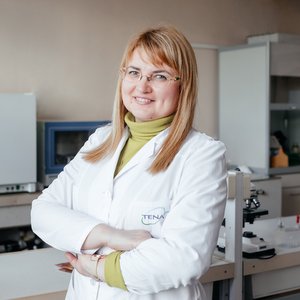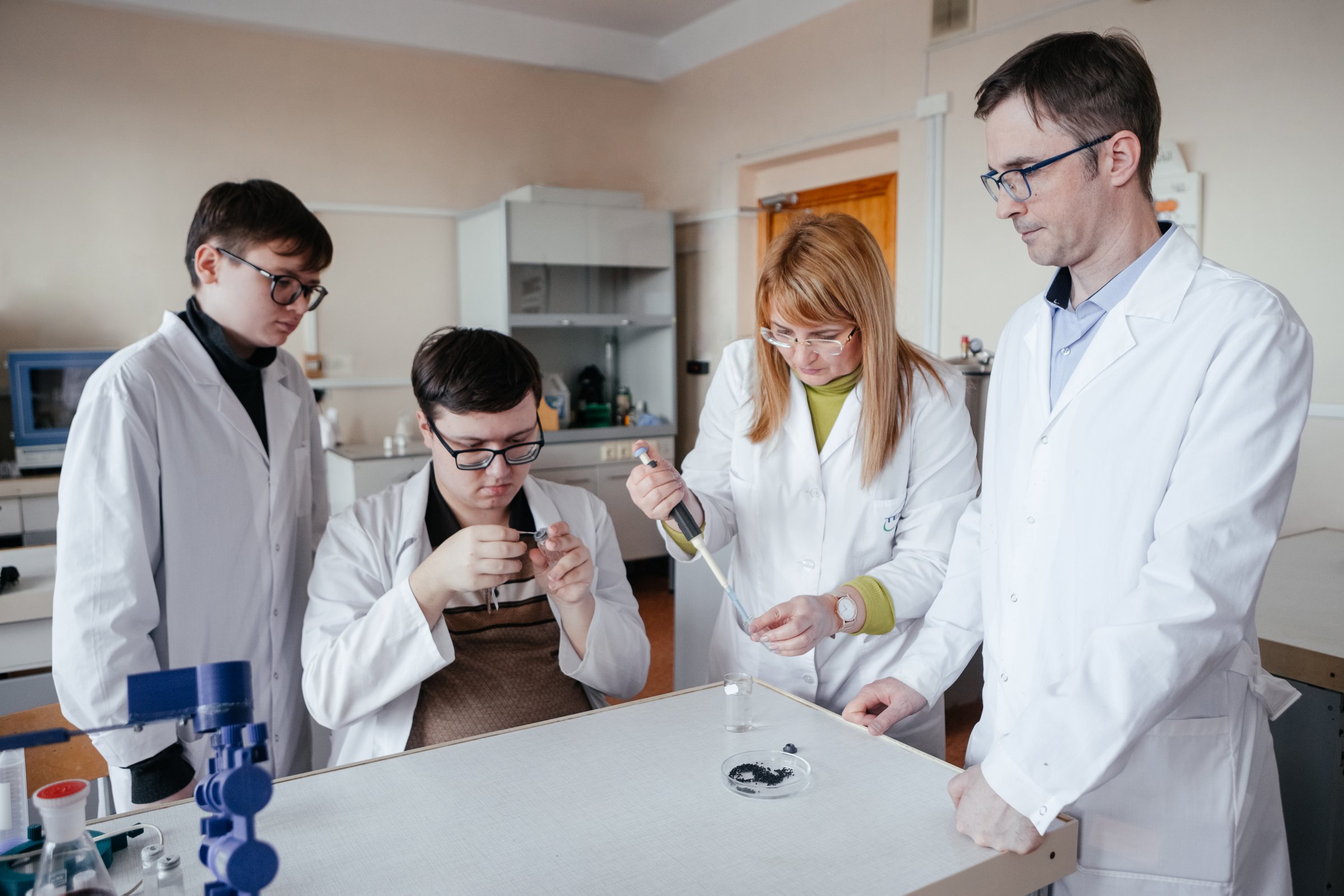In an experimental study, scientists and students at Samara University have measured the level of stress that onions experience in weightlessness. Artificial microgravity for onions was created on Earth using equipment developed by Samara scientists, while students and scientists were assisted in their scientific endeavors by schoolchildren from Samara. The experiment also determined the amount of time it takes for a plant to adapt to the stress of weightlessness. The findings will help broaden the scientific knowledge base of space biology, which studies the effects of spaceflight factors on living organisms (*).
“The study analyzed the effect of simulated microgravity conditions on onion root cell reproduction using the Allium test (**) – as the most common and effective method for assessing environmental effects on a living organism. Under microgravity conditions, plants change the expression of various genes, including those responsible for stress response, and cells produce a plant stress hormone, ethylene, that is capable of inhibiting root and shoot growth processes, allowing the plant to save resources during adaptation to new conditions. The results of our experiment helped determine to what extent the stress due to microgravity reduces the mitotic index of the plant, that is, to what extent the activity of cell division decreases, and approximately how long it takes the plant to adapt to this stress, slowing its development to a certain level,” said Dmitry Kistenev, one of the study authors, a 4th year student at the Biochemistry, Biotechnology and Bioengineering Department of Samara University.
According to him, onions were chosen as the test object because of a number of their advantages. The species is well studied genetically and has a small set of chromosomes, which are easily stained so that at relatively low magnification under the microscope, not only the phase of mitosis (cell division) but also the presence of chromosomal aberrations (abnormalities, mutations) for each individual cell can easily be determined. In addition, compared to some other popular plant test systems (such as cress), onions are more sensitive to a number of factors that inhibit the plant cell division cycle. According to some scientists, onions are even close to human cell culture in terms of their cell sensitivity.
Seeds of Alliumcepa L. "Krepysh" onion species were used for the experiment. They were germinated for five days in polyethylene foam rolls and filter paper in remineralized water in a thermostat at 22 degrees Celsius. A total of several seed lots of 50 each were grown, then some seedlings were selected as a control lot for later comparison, while others were loaded into a special device – a 3D clinostat – and subjected to continuous exposure to artificial microgravity for a period of time.
A 3D clinostat is a device in which the test object is rotated in different planes to minimize the effects of gravity. The position of the plant is constantly changing and gravity does not have time to take its full effect. Such a device could be compared to an astronaut training centrifuge, only the size of the clinostat is, of course, much smaller.
“The experiment used a 3D clinostat created by Samara scientists with the participation of students and schoolchildren using 3D printing technology from biodegradable plastic. The device features digital quality parts, lightness, functionality, is repairable, technological, mobile and reliable,” emphasized Elena Pisareva, Head of the Department of Biochemistry, Biotechnology and Bioengineering at Samara University.
After all the experimental procedures, the cells of the test objects were examined under a microscope at 600x magnification. The researchers found that after four hours of exposure to microgravity, the mitotic index of the plants, that is cell division activity, decreased by 35.16 % compared to the control group, for the eight-hour period the decrease was 49.23 %, for the twelve-hour period it was 47.41 %. That is, the stress of weightlessness causes the plant to almost halve its cell division activity.
“It can be concluded that the plant, experiencing the stress of being suddenly placed in microgravity conditions, gradually reduces the rate of the mitotic cycle in the apical meristem (***) of the seedling. In the four-hour exposure, this process still continues, tending towards a lower value of the mitotic index, typical of the eight-hour and twelve-hour exposures, at which the index reaches a steady level and even begins to decline somewhat. That is, we can say that between about eight and twelve hours of continued exposure to microgravity, the plant begins to adapt to this stress,” said Mikhail Vlasov, associate professor at the Department of Biochemistry, Biotechnology and Bioengineering.
Another important result of the study is that scientists found that exposure to simulated microgravity does not cause chromosomal aberrations (mutations) in plant cells. This is important not only in terms of growing plants in space, but also for studying the effects of spaceflight on humans.
“Sudden placement in microgravity had no effect on the number of chromosomal aberrations, hence the microgravity factor is not paramount for the accumulation of mutations and the plant is capable of adapting to it, albeit at the cost of reduced growth rates. It should be emphasized that the data obtained from the experiment can be extrapolated on virtually all plant and animal biodiversity. Besides, it is known that human endothelial (****) cell growth is slowed but not stopped in microgravity. There is also evidence that weightlessness negatively affects the number of chromosomal mutations in human fibroblasts (*****) exposed to radiation. This is why it is so important to study the effects of microgravity on living organisms, both in conjunction with other factors of space flight and in the presence of this factor alone,” Elena Pisareva summarizes.
For reference:
Samara National Research University is a participant university in the Science and Universities national project.
“Over the long history of space exploration, various plants have been in orbit more than once. The idea of growing plants in space was suggested by Konstantin Tsiolkovsky, the founder of modern cosmonautics, and in 1960, together with Belka and Strelka, on board the Sputnik-5 spacecraft, not only forty nameless mice, but also onion seeds, peas, wheat and corn flew into space. Currently, no one is surprised by space gardens and plant beds in orbit – lettuce and peas, wheat and radish and other edible plants have been successfully grown in space for a long time. Nevertheless, despite the wealth of experience in growing plants in space, the number of worldwide studies in this field is not diminishing but growing.
** The Allium test is a universal biotesting method to assess the effects of various environmental factors on living organisms. Onion sprouts meristem is used for testing. The Allium test is recommended by WHO experts as the standard for cytogenetic environmental monitoring.
*** The apical meristem is the group of cells that provides the formation of all organs and primary tissues of the plant shoot.
**** Endothelial cells are the cells that line the inside of blood and lymph vessels and heart cavities.
***** Fibroblasts are the cells of the bodily connective tissue that play an important role in wound healing.







